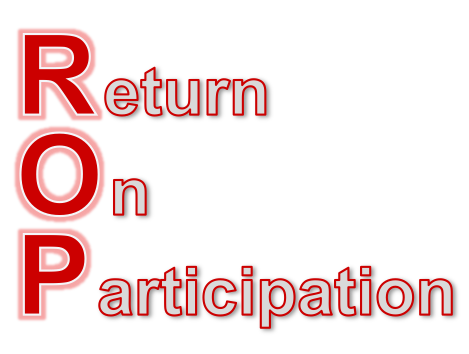Categories: Inventory Management
By Mark Tomalonis
Principal, WarehouseTWO, LLC
March, 2015
 “Inventory-sharing” is the formal collaboration by peer wholesaler-distributors to leverage each others' available inventories. Whether your company participates in an inventory-sharing network hosted by your manufacturer, buying group, trade association or third-party service (such as WarehouseTWO), access to more inventory results in better-served, happier end-customers.
“Inventory-sharing” is the formal collaboration by peer wholesaler-distributors to leverage each others' available inventories. Whether your company participates in an inventory-sharing network hosted by your manufacturer, buying group, trade association or third-party service (such as WarehouseTWO), access to more inventory results in better-served, happier end-customers.
But enough about making your customers happy. By actively participating in a successful inventory-sharing network, you can save and make real money. And your “ROP” (“return on participation”) is measurable.
Below are the top five ways your company can save and make money by participating with peer distributors in an inventory-sharing network. Next month, we will discuss best, and worst, practices to maximize your return on participation in an inventory-sharing network.
ROP Behavior #1: Fulfill your end-customers’ backorders for non-stock items by purchasing these items from members of your inventory-sharing network.
ROP: SAVE MONEY. Closing a backorder in a day or two, rather than waiting weeks for delivery from your regular supplier, saves your employees time (“time is money”) and allows you to avoid expedite fees or premium freight costs.
Key Features at WarehouseTWO to use: SEARCH, BROADCAST REQUEST
What to Measure: The number of purchase order lines placed to peer wholesaler-distributors for a backordered non-stock item. Assign a savings value to each event. A conservative estimate of savings is $50 USD per event. (In past surveys, users of WarehouseTWO have valued the per-event savings from closing a backorder quickly at $81 USD.)
ROP Behavior #2: Prevent over-buys of backordered non-stock items.
ROP: SAVE MONEY. Buying full box quantities or full reel lengths of a non-stock item is most likely the purchase of instant surplus inventory. Buy only the quantities or lengths that you need, from another wholesaler-distributor in your inventory-sharing network, to fulfill a backorder for a non-stock item. Your instant savings is what you would have purchased if you had bought the full box or reel from your regular supplier.
Key Features at WarehouseTWO to use: SEARCH, BROADCAST REQUEST
What to Measure: Line items purchased from peer wholesaler-distributors for backordered non-stock items. Identify those items for which your normal supplier imposes a full box or full reel purchase requirement. Calculate how much more you would have spent had you purchased the full box or reel.
ROP Behavior #3: Replenish active inventory at lower-than-standard distributor costs.
ROP: SAVE MONEY. Take advantage of peer wholesaler-distributors’ surplus inventories offered at “fire sale” prices. Items that your local customers buy often may be another distributor’s slow-moving or dead inventory. You may always have these items, preventing panic searches. Make the effort to match your recurring inventory needs to the inventory available in your network. There’s gold among the surplus!
Key Features at WarehouseTWO to use: BARGAIN HUNT
What to Measure: How much you saved by buying surplus inventory from peer wholesaler-distributors.
ROP Behavior #4: Offer ALL of your available inventory available to other members of your inventory-sharing network.
ROP: MAKE MONEY. Other members of an inventory-sharing network are like an additional sales territory for your company. Treat these other members as “house accounts” and avoid paying sales commission. Your net profit will be even higher!
Key Features at WarehouseTWO to use: POST INVENTORY, RELATED ITEMS, WEB MARKET
What to Measure: Gross profit earned from every sale to a member of your inventory-sharing network.
ROP Behavior #5: Turn surplus inventory into cash.
ROP: MAKE MONEY. Every sale of surplus, slow-moving or dead inventory is found money.
Key Features at WarehouseTWO to use: POST INVENTORY, RELATED ITEMS, WEB MARKET
What to Measure: Gross sales of every surplus item sold to a member of your inventory-sharing network.
In our lead article in next month’s WarehouseTWO e-newsletter, we will discuss “best practices” to maximize your return on participation in an inventory-sharing network. Click here to subscribe to our monthly newsletters.
About the Author
 After a successful career in sales and operations management in the wholesale-distribution industry, Mark Tomalonis is now principal of WarehouseTWO, LLC. He amuses himself by writing articles, such as this one, to help wholesaler-distributors execute their operations better. Mark’s articles and tips are published in WarehouseTWO’s monthly e-newsletters. Click here to subscribe.
After a successful career in sales and operations management in the wholesale-distribution industry, Mark Tomalonis is now principal of WarehouseTWO, LLC. He amuses himself by writing articles, such as this one, to help wholesaler-distributors execute their operations better. Mark’s articles and tips are published in WarehouseTWO’s monthly e-newsletters. Click here to subscribe.
About WarehouseTWO
WarehouseTWO, LLC is an independent “inventory-sharing” service created exclusively for durable goods manufacturers and their authorized distributors, and for any group of durable goods “peer” wholesaler-distributors, such as members of a buying/marketing group or cooperative. To learn how inventory-sharing with WarehouseTWO can help your business, visit the WarehouseTWO website, or email info@warehousetwo.com.